This fantastic archive photography shows how different Norway's second biggest city Bergen looked in the 1800s.
Regular readers will now I occasionally like to dig into the archives to bring you historic photography. I find it fascinating to see what the streets I walk in 2021 used to look like decades or even centuries ago.
Previously I've looked through the lens at weddings in the fjord region, fires in Trondheim and the peaceful Nordfjord, among others. This time, the spotlight falls on the history of Bergen. All photos are courtesy of the City of Bergen's photo archive.
Table of Contents
Views of Bergen
The Bergen of today is well known for its views from the many mountains that surround the city. Most notable is the view from Mount Fløyen at the top of the Fløibanen funicular.
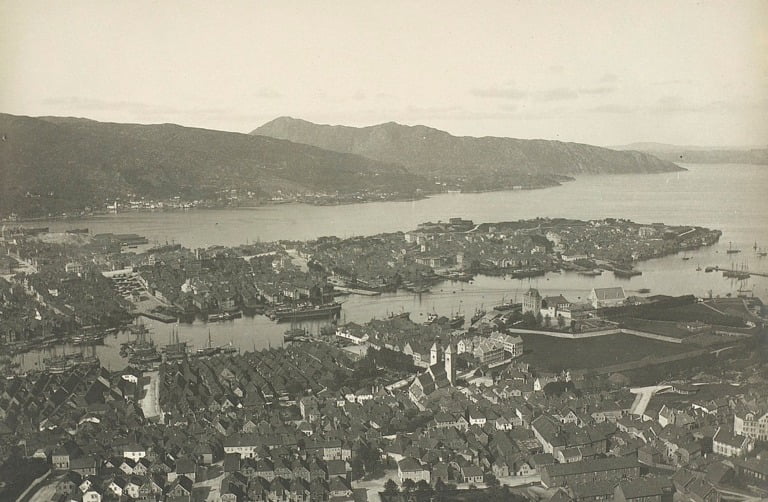
Judging by these photos from around 150 years ago, people enjoyed hiking up for the views then too.
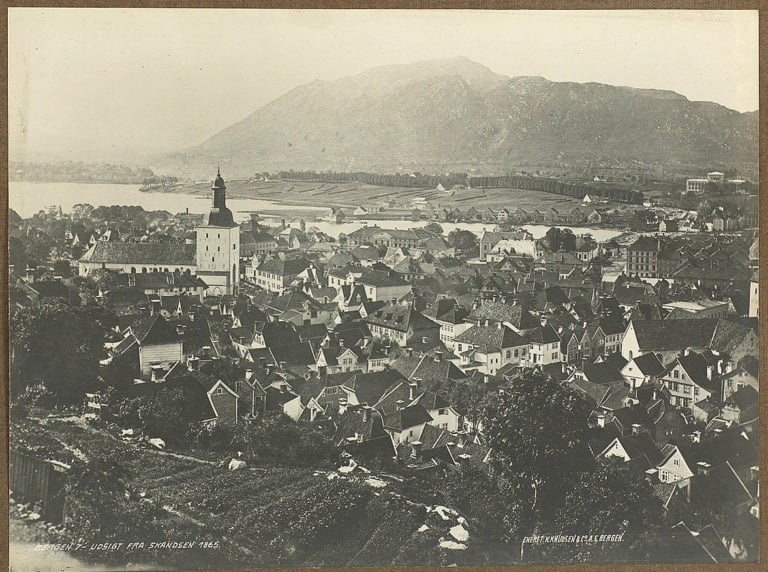
While the shape of the city is familiar, look closely and you'll see significant differences. Unlike today, the city is mostly low-rise and not as spread out as it is today.
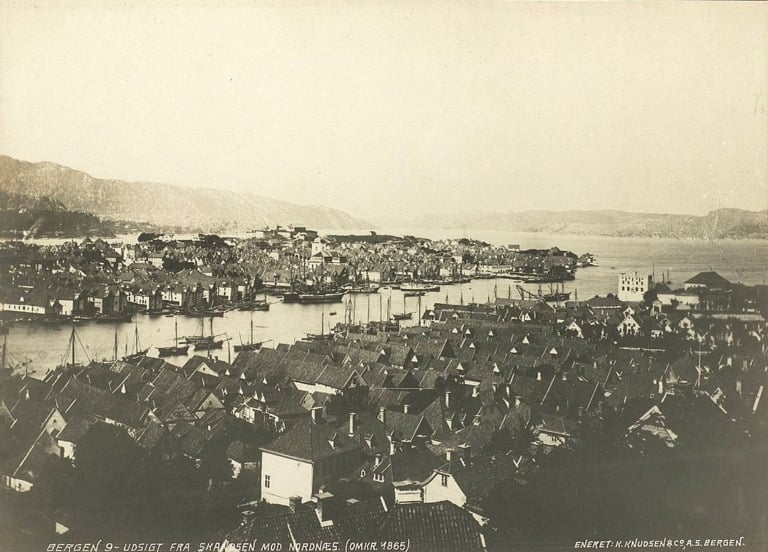
From 1850 onwards, Bergen grew rapidly thanks to people moving to the city largely from the more rural counties of western Norway. Increasing industrialisation led to a shift in jobs from the countryside to the city.
Read more: Bryggen, Bergen's UNESCO World Heritage Site
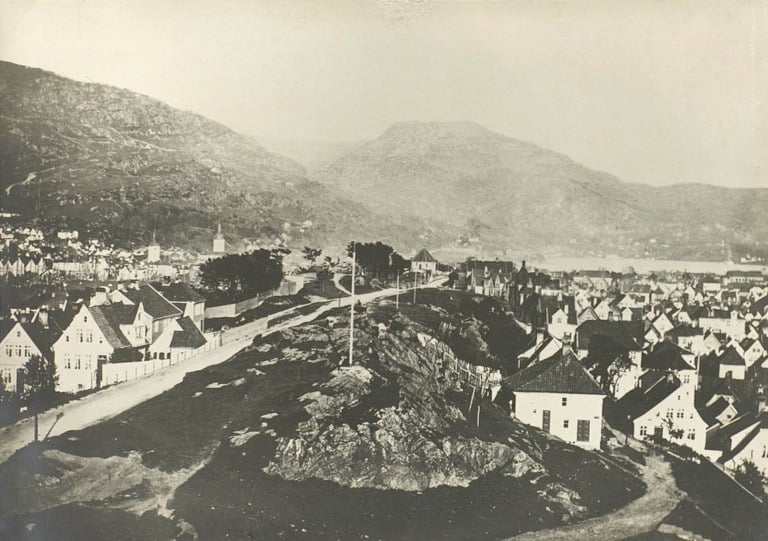
Bergen waterfront
The differences become more obvious when taking a closer look at the waterfront. Most notably, how active the harbour is! Today the harbour is primarily a tourist attraction, but in the 19th century it was very much a hub for fishing and trade.
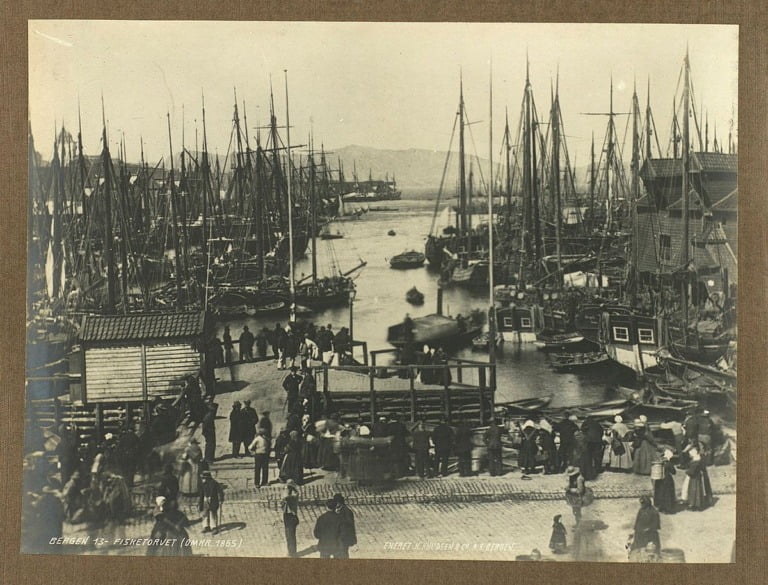
In the 19th century, thousands of Norwegians left the country in search of better fortunes abroad. The photo below shows an emigration ship moored in the harbour, bound for destination unknown.
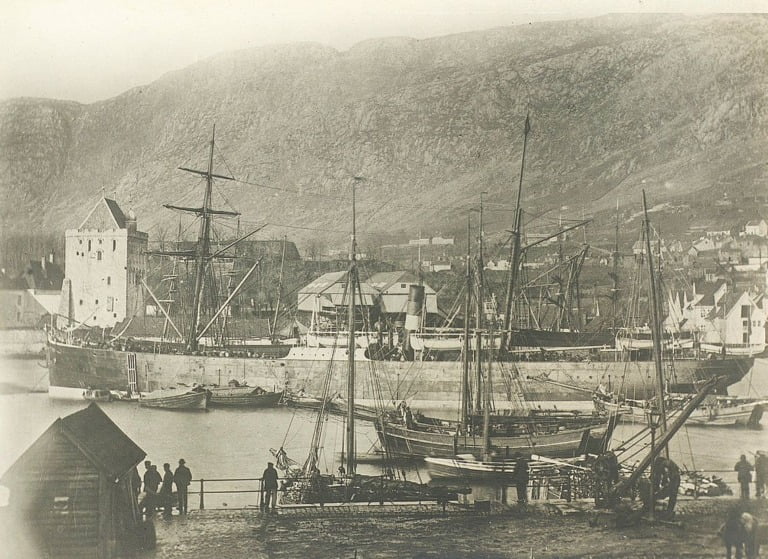
Despite this emigration, Bergen enjoyed population growth. The city firmly established itself as the base of Norwegian shipping, leading a rapid transition from sail to steam.
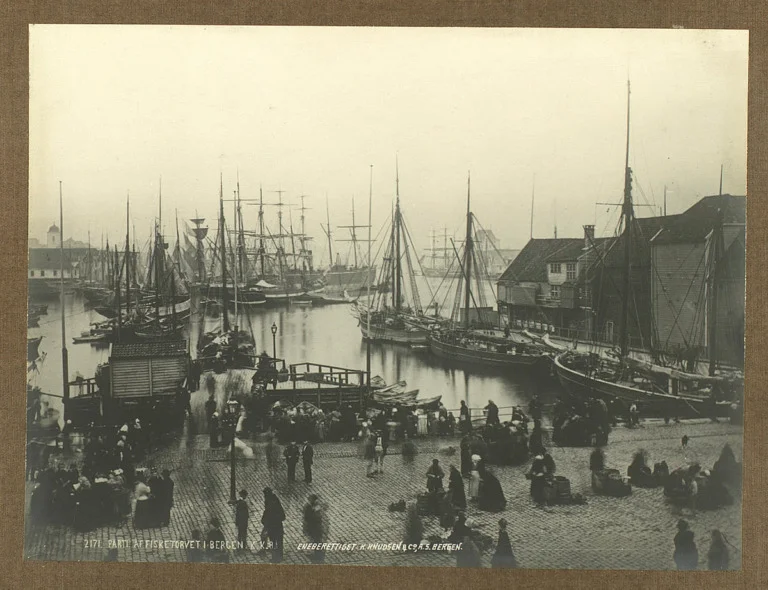
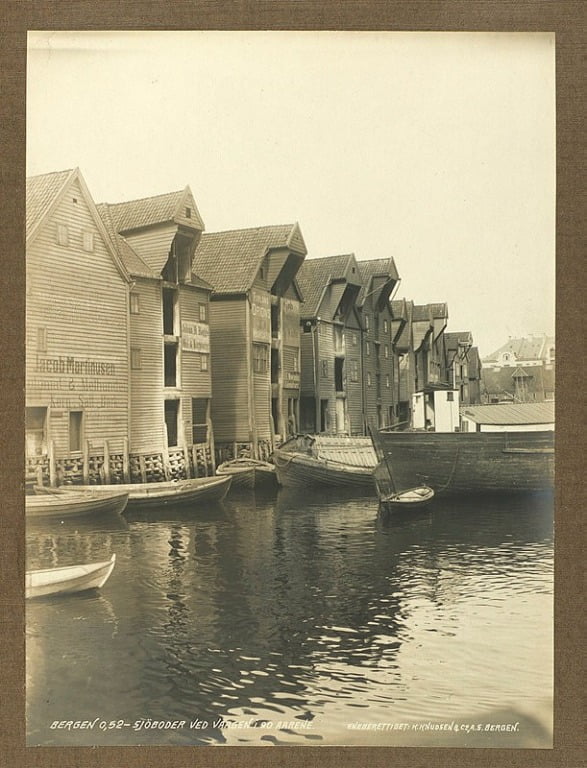
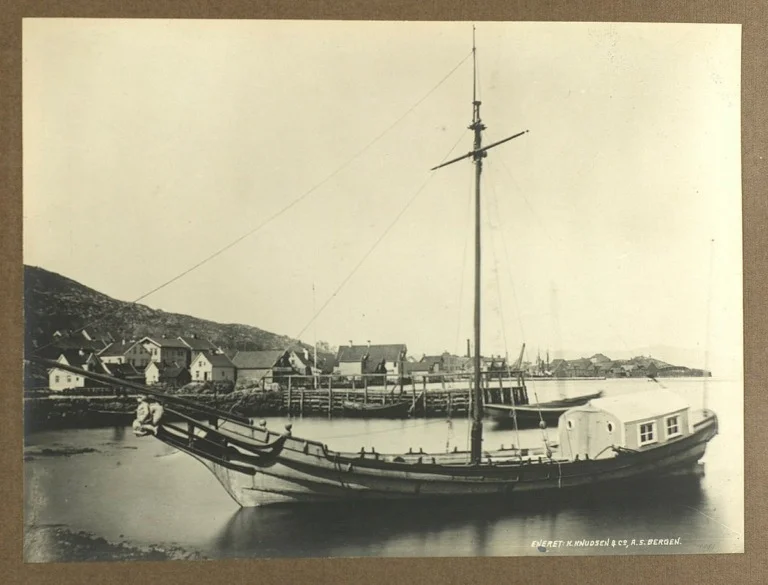
Central Bergen
Aside from the waterfront, the biggest difference you'll notice is the lack of people, despite the population growth. Of course, what little tourism there was paled in comparison to modern times.
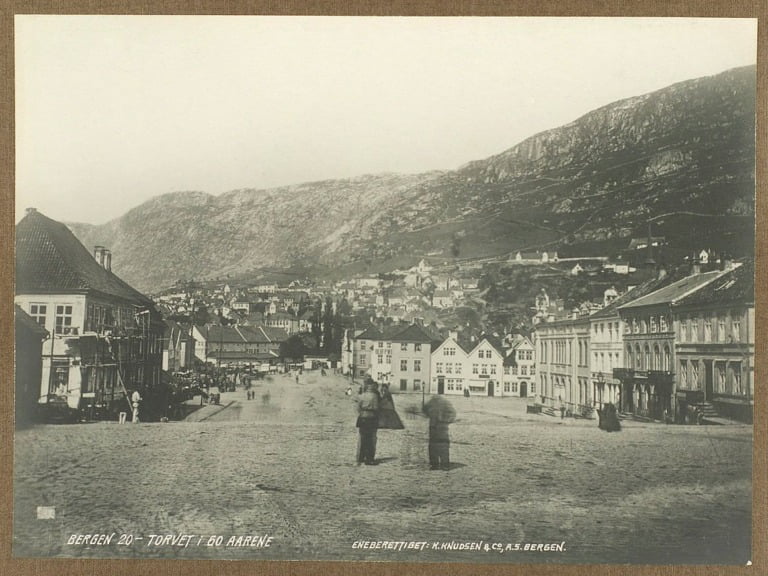
I don't think I've ever seen Torgallmenning and Torvet so quiet, even in the middle of the night!
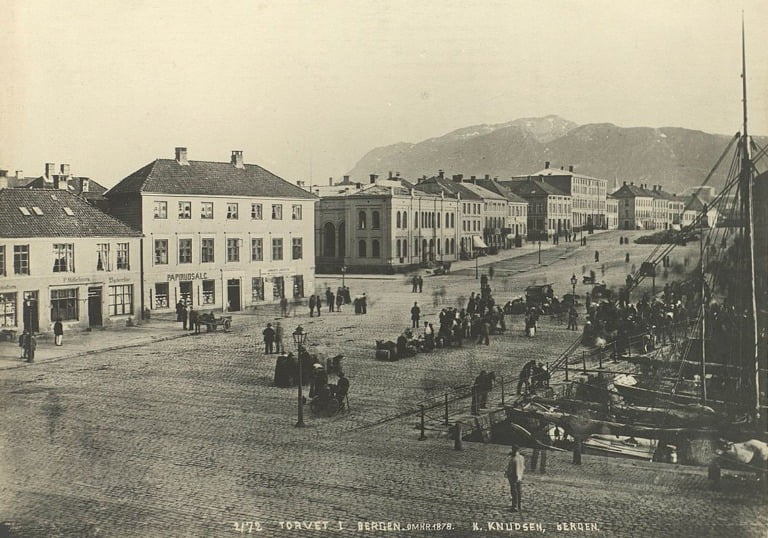
Towards the end of the 19th century, three- and four-storey tenement blocks of varying standards were built to house the growing population.

We are also, of course, in the era before the motorcar. A few horse-and-carts are visible, but most people got around the city on foot, or by boat.


Ole Bull
The Norwegian violinist and composer Ole Bull lived from February 1810 to August 1880. Born in Bergen, Bull left a long-lasting legacy on the city. The Ole Bull Scene concert hall is just one example.

Bull had his summer house in Valestrand, near Bergen. The house was designed by his youngest brother, the architect Georg Andreas Bull. Ole Bull lived there for a time principally between tours, before moving his family to the island of Lysøyen in 1872.

The crowds attending his funeral in 1880 showed the popularity of Ole Bull among the residents of his home town.
If you want to check out more history of Bergen, take a look at the video we recorded at Gamle Bergen Museum.


I’m glad for the touring bus ban – they must be hard on elderly buildings, and alter the atmosphere of and interfere with experiencing the area tourists want to experience. Of course, crowds of tourists also alter the environment but at least the bus fumes and the blockage of being able to see the area is improved. Just banning buses doesn’t take us back to the history but it helps in the noise level being somewhat less and the exhaust fumes happening away from this very historic area.
and the exhaust fumes will be less, and the buses won’t block the views. It’s hard enough just trying to see around heads in the crowds of bus groups. The amosphere can never be the same as centuries ago, but those of us who like to imagine that – with sounds of horses snuffling and clop clopping, wagons squeaking if any are being pulled, and hopefully softer voices when people don’t have to compete with the humming buses running their air conditioning and toot tooting as they search for where to park and block MY view – CHUCKLE Should help preserve the age old buildings and atmosphere too.
Couldn’t agree more with Judy Hollister’s assessment regarding the (now former) bus situation in Bergen’s historic district. Although I miss seeing the city buses on St. Peter Street, here in St. Paul, Minnesota where I live (the line was relocated recently a block further east after light rail put in downtown), the exhaust and constant noise these diesels created was a real nuisance over the years. This was immediately evident when I first moved into my condo, in 1981, and which then continued over the next 20 yrs or so. The pollution was so bad, in fact, it even ate the finish off my bicycle stored on my balcony over winters (not just due to salt, either). The irony was that the old street car tracks on St. Peter (most are still there) had been paved over decades earlier following the city’s conversion to rubber-wheeled gas and diesel buses. We can all thank Goodyear, Goodrich, and the like, for promoting same, so as to demise the cheaper and cleaner trolleys of rail that once efficiently plied our streets. Hopefully, more light rail here will be added soon.
Do you have pictures of or from the island of Sotra (my spelling may be wrong)?